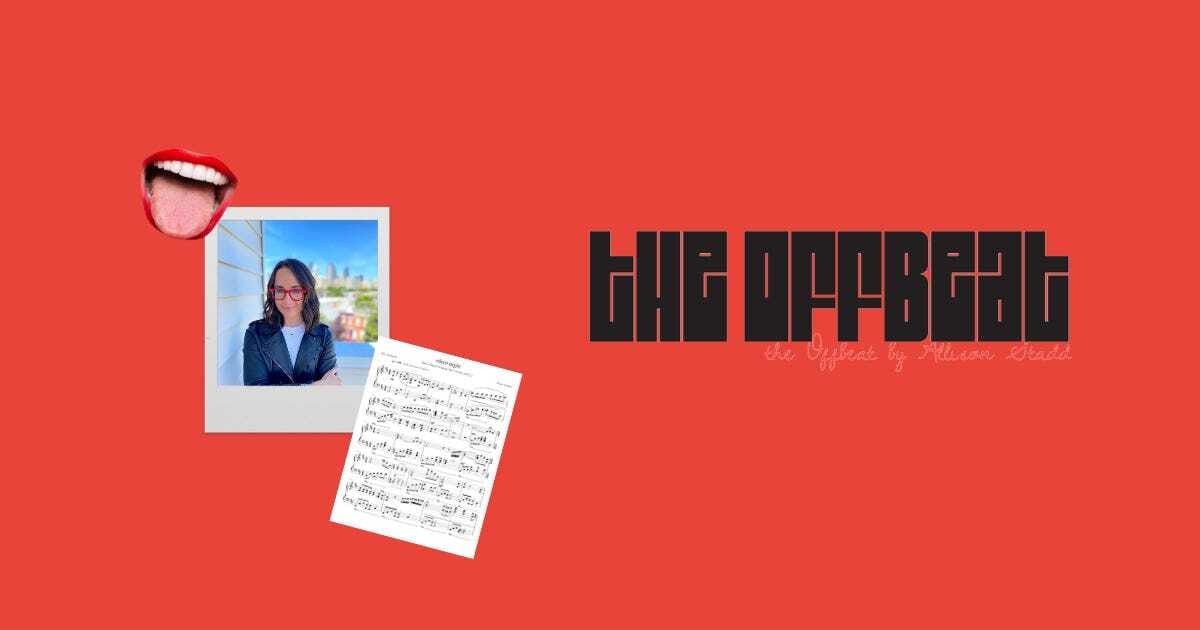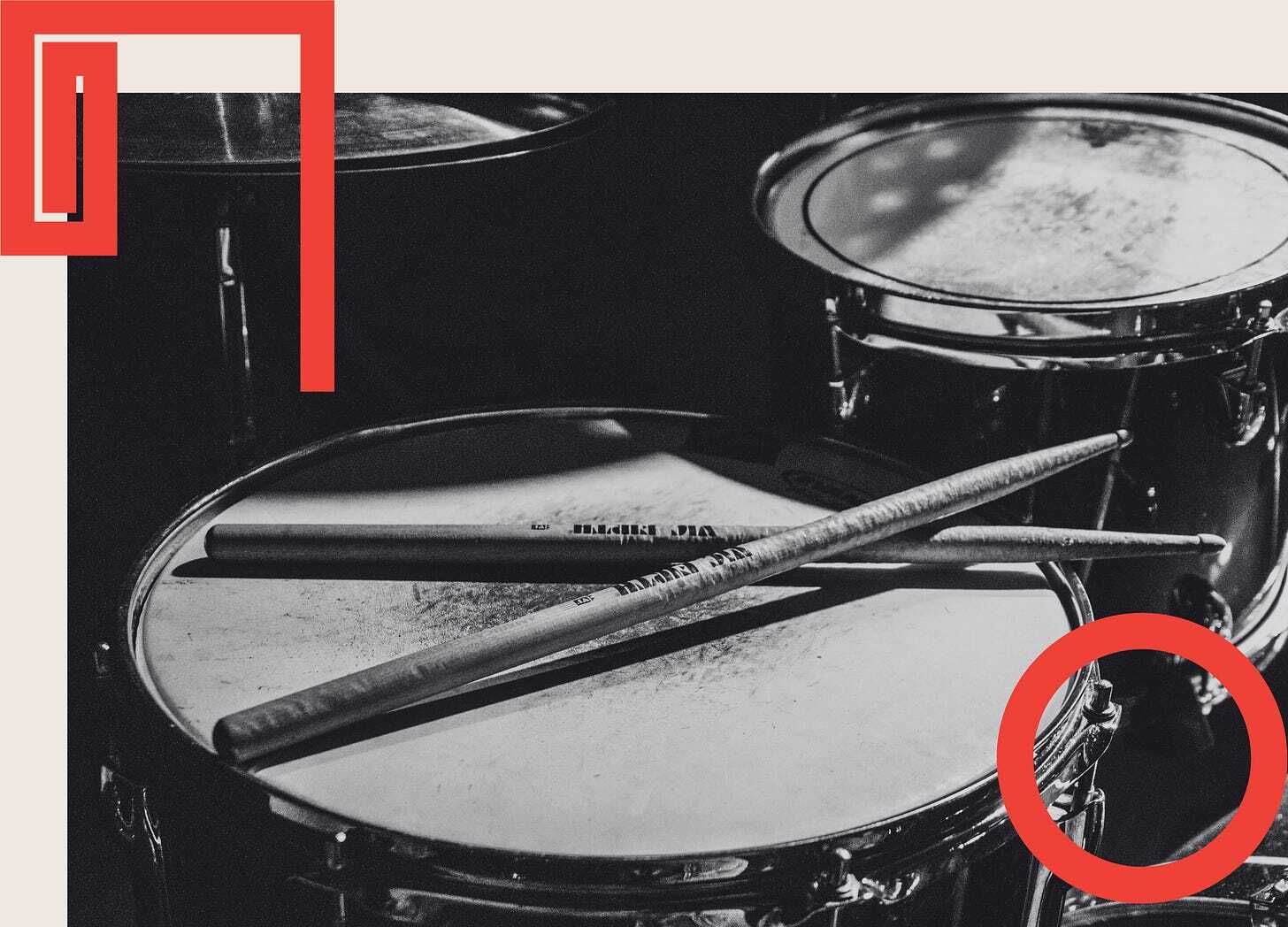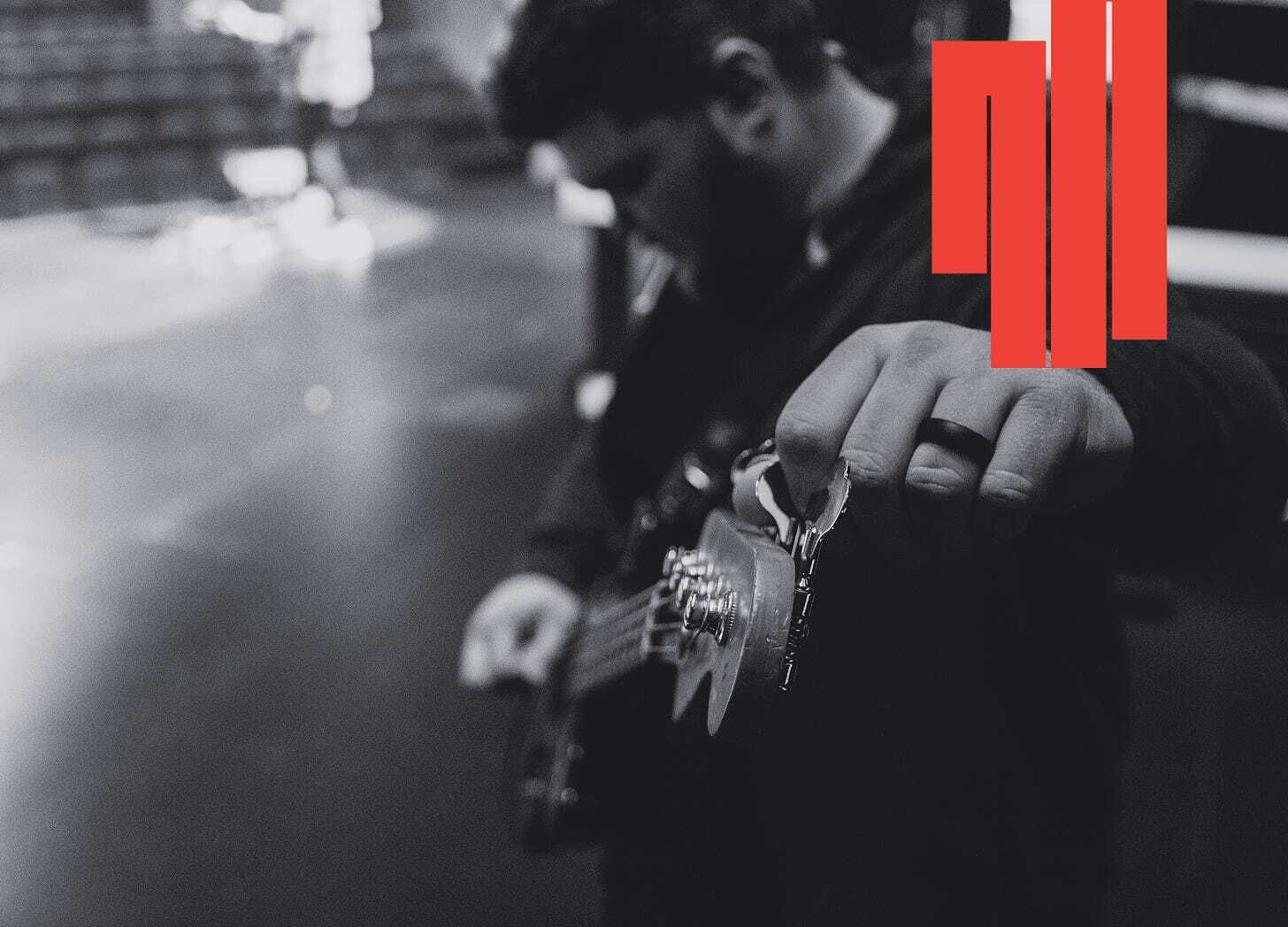- The Case for Brand
- Posts
- How Allison Stadd 🥁 Is Jazzing Up Workplace Culture as SVP of Brand, Culture & Media at Shipt (Target)
How Allison Stadd 🥁 Is Jazzing Up Workplace Culture as SVP of Brand, Culture & Media at Shipt (Target)
I sat down with Allison to explore how she uses structured creativity and jazz rhythms to transform teams, fuel brand growth, and bring human connection into the workplace 🥁

This is The Case for Brand, where brand meets business. I’m Amanda Gordon—brand strategist, fractional marketer, and former Division 1 runner who still likes to move fast (but with purpose). Every week, I break down how brand actually drives growth—from building it, to operationalizing it, to proving it works.
This interview is part of a🎙brand operator series: once a month, I sit down with the people building brands from the inside—CMOs, brand leads, and founders in the trenches. Less fluff, more field notes. Think of it as your backstage pass to how brand strategy plays out when the stakes are real.
Who will love this
🎷 Jazz heads who think in riffs, not rules
🖤 Brand leads driving change from the inside
🛠️ Org architects who see structure as strategy
Today
Good morning!
I’m stoked to release today’s interview. I spoke with Allison Stadd and left our conversation absolutely buzzing—about team rhythms, org design, and what it really takes to build a brand.
Funny enough, we didn’t spend much time talking about “brand” directly. And that’s the point: we were talking about creating the conditions for brand to actually work—to move across an organization with impact.
Leading brand is no small feat. It touches everything: culture, media, product, board decks, and the occasional social media firestorm. It’s not for the faint of heart. Doing it well and setting a rhythm that helps others thrive? That’s the kind of leadership I aspire to, and Allison Stadd is one of those leaders.
I’ve loved connecting with Allison, learning from her newsletter, and just being in her orbit. I think you’ll feel the same.
Enjoy,Amanda
This conversation has been lightly edited for clarity.
Amanda Gordon: Allison! You’re a marketer with two decades of experience and some really well-loved, culturally relevant brands under your belt. I'd love to know what brought you to your current role, and what drew you to both the position and the brand.
Allison Stadd: I always start off by saying I never meant to be a marketer—I kind of fell into this field. I studied English, creative writing, art history, and was involved in the arts from a young age—dance, jazz drums. I thought I’d be a magazine editor or work in book publishing, but a lot of those creative fields were drying up just as I was entering the workforce.
I found my way into digital brand marketing through the side door—blogging and social—back when platforms were first launching brand capabilities. Like, I remember when Facebook only had profiles, no Pages.
I really found my footing at Shake Shack, where I joined as a marketing manager and rode this rocket ship trajectory as the business scaled globally and went public. That experience made me realize how much I loved in-house consumer brand marketing.
Fast forward: what drew me to Shipt is that it encapsulates everything I love about marketing. My personal values—connection, growth mindset, and creativity—are central to how I work. Shipt is all about bringing human connection back to online shopping.
We’re a retail tech company connecting people to reliable, high-quality, same-day shopping and delivery with a personal touch. We have a phrase I love: “Technology without a personal touch is meaningless.” That really resonates with me.
In my role, I help shape the stories we tell and how the brand shows up in B2C and B2B spaces—for consumers, , retail and CPG partners, and even our parent company, Target.
Amanda Gordon: You’ve led teams and built brands across different categories. I’d love to hear your approach to team building and leadership, especially as the categories shift. I’ve heard you talk about ACE—accountability, communication, and empathy. Can you share more about that?
Allison Stadd: I’m a big proponent of owning your career. That means being proactive—putting yourself in the driver’s seat to go after what you want. Maybe that’s a new, more senior role, or maybe it’s just a stronger sense of confidence. But it starts with figuring out what you need, making a plan, and taking action. No one’s going to hand it to you—especially if you have less privilege or come from an underrepresented group. These things don’t just fall in your lap.
Another thing I’d say is: build identity capital. It’s a phrase from a David Brooks piece in the New York Times that really stuck with me. It means doing things you can talk about—in interviews, at dinner parties—things that make you interesting. That kind of curiosity is magnetic.
And no, it doesn’t have to be something big like skydiving. It could be starting a knitting club, adopting dogs—little things that give people a way to connect with you. That way, when you send a cold message on LinkedIn or get introduced to someone new, they’re more likely to respond because something about you clicks.
Amanda Gordon: Totally. And the way you talk about jazz and music is so personal—it really resonates with me. I played piano growing up and have always been into music. It gives you this unique language to talk about what you do.
Amanda Gordon: How do you think about brand?
Allison Stadd: I think of my team—and brand teams in general—as the gasoline in a company’s tank. At Shipt, we love vehicle metaphors, for obvious reasons.
I see brand as fueling both business and brand growth: building the brand in service of the business, and building the business in service of the brand.
It’s not the only part of the machine, but it powers everything. Like adding fuel to a fire—it brings momentum, speed, and direction.
Amanda Gordon: Switching gears a bit—how do you approach collaboration and planning in large or remote environments, especially across internal and agency teams?
Allison Stadd: There are three things I rely on: structure, improvisation, and energy.
First—structure. Clear milestones, defined goals, roles, and responsibilities. That’s critical regardless of org size. Growing up as a marketer in fast-paced startups taught me how to create order out of chaos. That’s where everything starts.
Second—improvisation. As someone who thinks in jazz, I believe in freedom within a framework. The structure is your foundation, but you need room to shift, respond, and flow with what’s happening—whether that’s changes in timing, trends, team dynamics, or something blowing up on TikTok that could redirect your whole campaign.
And third—energy. Why can’t work be fun? Collaboration should be energizing. Celebrate momentum. Mark micro-wins. That energy flywheel makes the work better and the process more human.

Amanda Gordon: Yes! I love that. What’s your planning and meeting cadence like in a remote setting?
Allison Stadd: I’m a big believer in rituals, routines, and clarity—for example, I love a one-slide “plan on a page.”
From a creative perspective, we do daily creative huddles instead of just weekly editorial meetings. Every morning we check what’s trending, what’s shifted in the news landscape, or any internal blockers we need to know about. Things move too fast not to.
Then for monthly team all-hands, I always build in time for games. We do “random question roulette” with a branded virtual wheel—everything from “how do you like your popcorn?” to “what smell would you want to smell for the rest of your life?” (Mine’s rosemary, by the way.) We also love “Name That Tune.”
These routines give structure while still keeping that creative freedom and improvisational spirit.
Then there’s the plan on a page: a single slide with the big vision and objective up top, clear KPIs at the bottom, and just enough structure in the middle to make everything click. Clarity is magic.
And finally, I like to use rules of thumb. For example: a 70/20/10 budget split—70% proven tactics, 20% innovation, 10% smart risk. These help anchor the work while still leaving room to adapt.
Amanda Gordon: I read one of your recent newsletters on tuning up and loved it. It really shows how much of a systems thinker you are—which I identify with. Why do you think systems, whether personal or organizational, matter?
Allison Stadd: Not to belabor the jazz metaphor, but I think of systems like jazz charts—they’re sheet music, but not in a rigid, classical sense. They sketch the big picture without spelling out every detail. That’s how I think about systems: they’re frameworks with some gray areas and flexibility built in.
Especially in fast-moving, chaotic, or unstructured environments, systems bring clarity. They provide consistency and psychological safety. And when people feel safe and supported, they do their best work.
Amanda Gordon: Oh my gosh, preach. I’ve worked in a lot of startups and agencies, and those rhythms are not always there. I think that’s what’s driven my desire for structure—knowing how it feels psychologically when it’s missing. It’s really hard and stressful.
Allison Stadd: It is stressful. It creates this sense that the floor could drop out from under you at any moment. And at the same time, it can feel like your work is futile—like you're pushing a massive boulder up a mossy hill and sliding back every day. You're just trying to get that thing up far enough to see the horizon. It’s demotivating.
Amanda Gordon: You’ve touched on this already, but I want to ask more directly about how you operationalize strategy. Coming from a background where the “deliverable” is often the strategy deck, I’m curious—once you’ve done the planning, how do you actually play the piece?
Allison Stadd: One of the biggest unlocks for me in this role was team structure. That’s made operationalizing strategy much simpler.
First, I centralized all media—full funnel, consumer and gig worker sides—on one team. Second, I created a new team called Cultural Activation and Campaigns. That team is the beating heart of our campaign strategy: social, content, influencer, creator, talent, experiential, brand partnerships, brand identity, campaign planning—all housed together. They work closely with the media team.
Then there’s B2B marketing, which includes sales enablement and go-to-market strategy for our retailer and CPG partners. And finally, our integrated marketing with Target, our parent company.
Because the teams are structured this way, our planning follows that same structure—it makes everything more intuitive. I think of org structure as a tool to help the work come to life.

Amanda Gordon: I love that. I don’t think I’ve ever heard anyone say that before, but it makes so much sense.
Allison Stadd: Exactly. As a team leader, that’s why I’m so passionate about leadership—it’s your responsibility to structure your team in a way that sets them up to thrive.
You want to reduce friction. For us, for example, we weren’t getting enough external credit for our great work. We weren’t generating enough buzz or market share. And internally, people who needed to work closely together were too far apart. So I changed that. That’s your job as a leader—solve it.
Amanda Gordon: Totally. So getting into the practical side—what does that look like? Are we talking new role charters, new meetings...?
Allison Stadd: Yes, exactly. A full reorg—new job descriptions, new remits, new KPIs, and responsibility mapping.
I also prefer a DACI model over a RACI. That’s Driver, Approver, Consulted, Informed. I’ve always found RACI confusing—how can you be responsible but not accountable? DACI is much clearer.
Then we have cross-functional routines—like a weekly Marketing Review where CMO direct reports gather and teams share updates. It’s part creative review, part alignment meeting. We have several rhythms like that.
Amanda Gordon: I love that. I think people shy away from that work. Reorgs are hard, but I’ve also seen them become huge unlocks. It feels like an underutilized tool.
Allison Stadd: Totally. If it’s done thoughtfully, it can change everything. Of course, it temporarily disrupts the stability we’ve been talking about. But once the dust settles, the benefits are so clear.
Leadership is hard. It involves real people with valid feelings, opinions, preferences—and all of that needs to be honored.
Amanda Gordon: I want to pivot a bit and talk about external partners. How do you see that landscape shifting—especially with agencies and creative collaborators? What’s exciting you? What’s frustrating?
Allison Stadd: I have a lot of respect for agency partners. There are people I’ve worked with over the years who are still part of my extended “Swiss Army Knife” network.
That said, the role is changing. Agencies are less about execution and more about thought partnership. That’s where their value really shines—asking the hard, smart questions that don’t always surface internally, pushing the brief, helping brands see around corners.
They’ll always have a seat at the table, just not necessarily as the ones doing all the work—they’re there to deliver perspective.
And there’s something agencies bring that internal teams can’t: visibility across a broad portfolio. They have insights into trends because they’re working across multiple industries and clients—even while honoring confidentiality.
I’m also excited by how creators are being integrated into the traditional brand infrastructure. The best agencies and brands are baking creator assets directly into the media mix, not siloing them off.
That’s where things are heading—and it’s really cool to see.
Amanda Gordon: How are you thinking about AI—both personally and within your team’s work?
Allison Stadd: Personally, I use it a lot for drafting, riffing, and exploring ideas. But I never use it to finish something. As a trained writer, it just feels a little icky to lift something directly from ChatGPT. That said, it’s super useful as a sparring partner—it just always requires a human finishing touch.
At least for now, we all need to recognize that it still requires fact-checking and responsible use. It makes things up, and it doesn’t always follow instructions. I once asked it to avoid rhetorical questions—they don’t sound like me—and it responded, “Got it, logging that in my memory,” and then immediately gave me more rhetorical questions.
It’s imperfect, but valuable. From a Shipt perspective, we’re a company rooted in human connection and relationships. We’re very customer-focused and stringent about data privacy, which is foundational to how we approach AI.
That said, the use case I’m most excited about is our partnership with our media agency using a proprietary generative AI tool. It can generate hundreds of creative assets for a campaign—enabling testing and optimization at scale, which would otherwise be really difficult and time-consuming. But again, it requires oversight and creative shaping from our team.
Someone at the Brands & Culture conference described it like this: it’s an Iron Man suit for your creative team. You still need the core talent—it just 10x’s what they can do.

Amanda Gordon: What advice would you give to marketers trying to balance long-term brand building with short-term growth pressures?
Allison Stadd: That’s the eternal tension, right?
First, don’t treat them as opposing forces. Think about connecting the two. That mindset is finally becoming more mainstream, which is great. Even if they're structured as separate teams, planning, strategizing, and measuring should happen together.
That also applies to creative and media. For example, challenge yourself: can we embed a direct-response message in a brand-forward, upper-funnel story? And vice versa—can we infuse even the most conversion-driven ad with a bit of brand flavor?
Also, short-term tactics should be in service of the long term. If they’re not, you’re eroding your base. I've seen this again and again—when you go too hard on short-term wins, you pull in people who don’t stick. You might hit your quarterly numbers, but miss your annual goals.
Even if you don’t “believe” in brand, you’ll regret neglecting it.
Amanda Gordon: Your LinkedIn header says you’re on a mission to "jazz up workplace leadership." We’ve touched on it, but what does that mean to you?
Allison Stadd: It’s my driving force. I use music as a metaphor for leadership and marketing. I think a lot of how we work in the corporate world is broken—and it’s up to leaders to fix it.
What we’ve been doing for decades isn’t working. We need unexpected sources of inspiration. For me, that’s music.
Also, I believe anyone—regardless of whether they manage people—can and should show up as a leader. If everyone brought a bit of creative thinking, fresh energy, and leadership mindset into their work, we’d see radical change.
Amanda Gordon: Was that leadership mindset always in you? Or was there someone in your life who inspired it?
Allison Stadd: I love that question. I think it was a gradual realization. Through reflection—and through accepting that I really do enjoy being a leader—I’ve come to embrace it. On my good days, I think I’m decent at it...I mean, you’d have to ask my team!
In some ways, I think I’ve been leaning into leadership my whole life. I had a position in student government in elementary school. I was the drummer in the jazz band through middle school, high school, and college—which, by the way, usually only has one drummer, even though there are five trumpet players.
I was also co-captain of my dance team in both high school and college. So leadership showed up early, but it wasn’t always in the most obvious ways—it wasn’t “President of the Student Government Association.” It was more about being part of a unit.
So I think it was always there. And I really believe it can be there for anyone.
Amanda Gordon: Amazing! Where can people find you?
Allison Stadd: I’m on LinkedIn, where I post three times a week with offbeat ideas for jazzing up leadership and marketing. And I also write on Substack at allisonstadd.substack.com.
Was this message forwarded to you? Need to make the case for brand? Sign up below 👇
Call me, beep me 📞
🗒️ Want more stories like this? Subscribe to the newsletter.
👋 Let’s stay in touch—connect with me on LinkedIn.
👩💻 Got a bold brand to build? Book a chat.